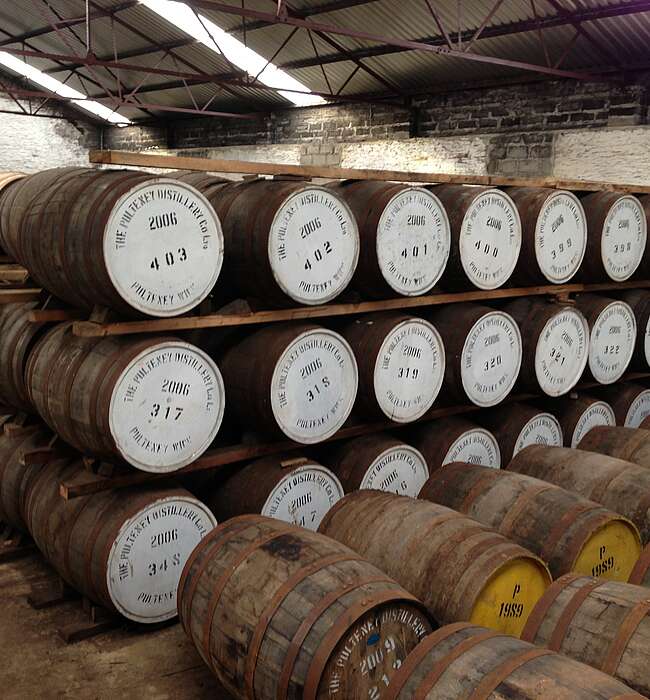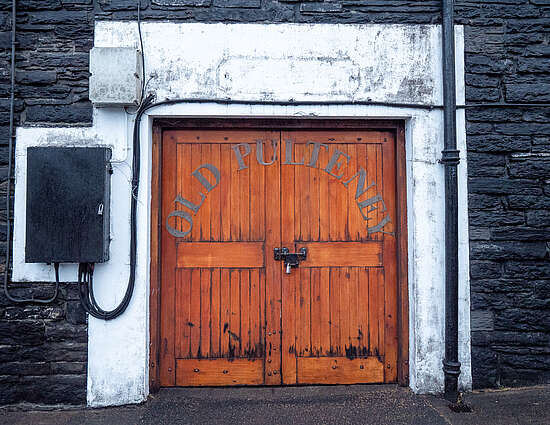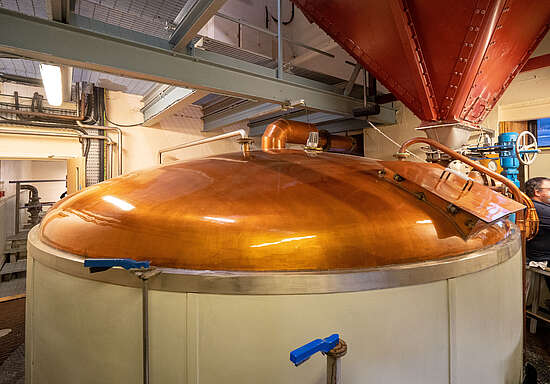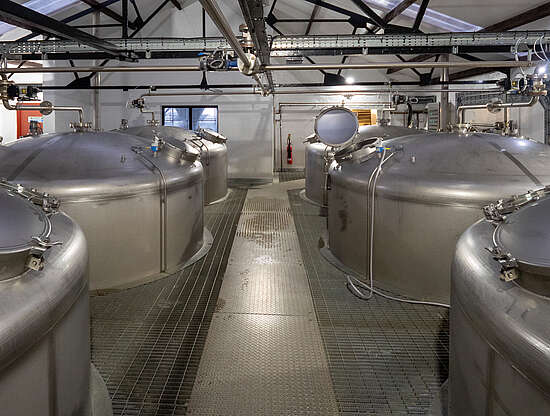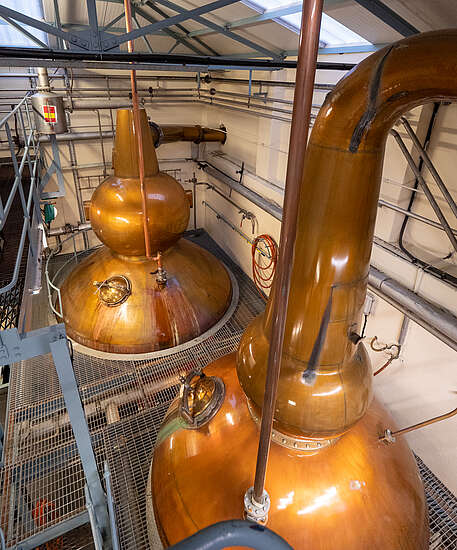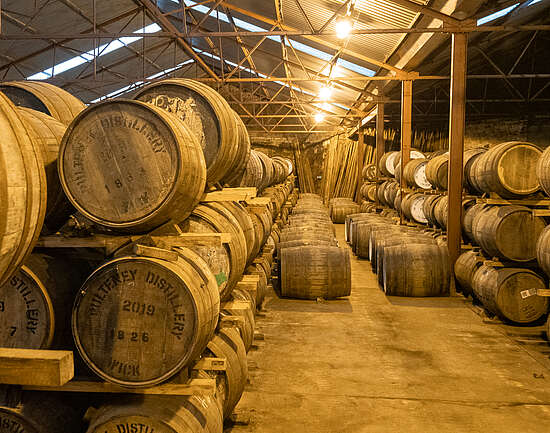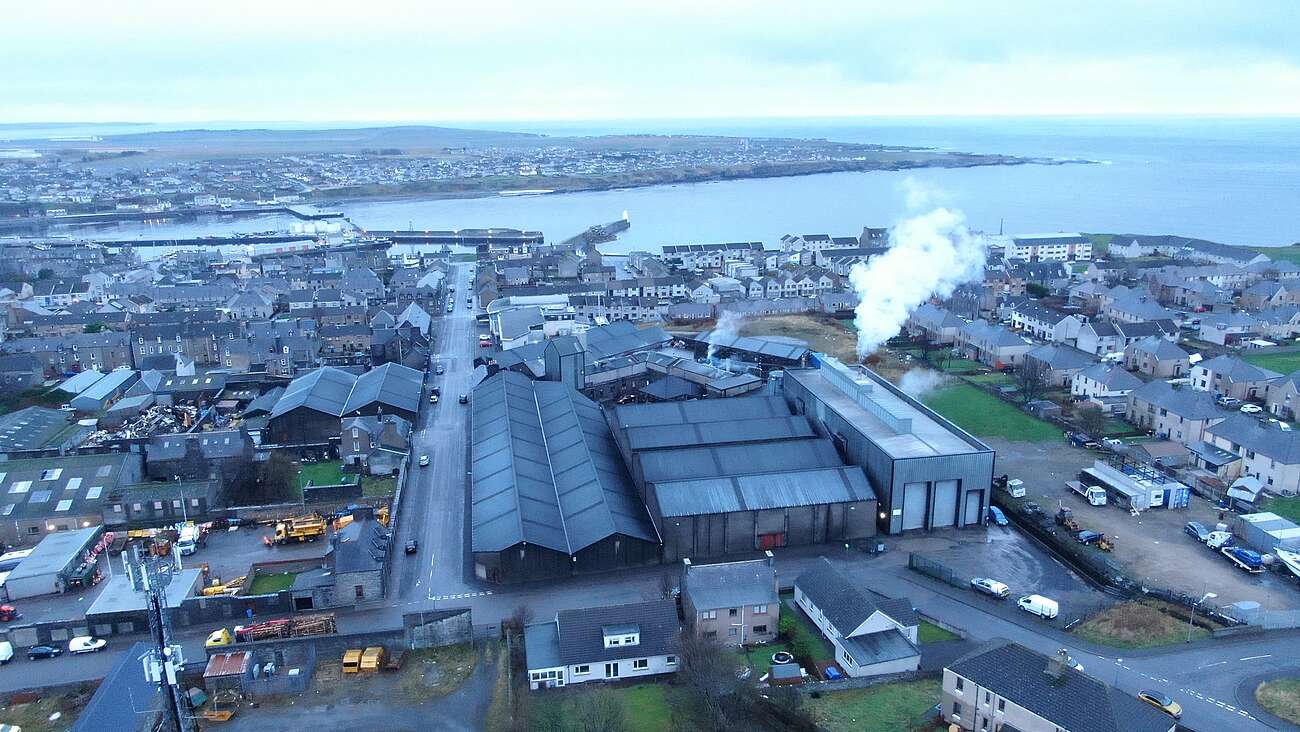
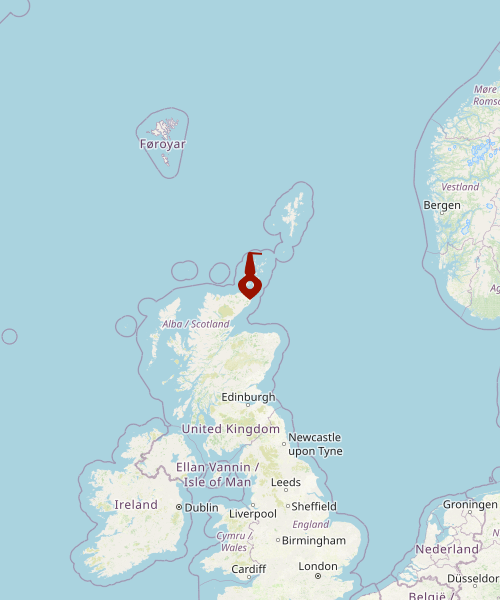
Pulteney
For a long time Pulteney could be called the most northern distillery on the Scottish mainland. When Wolfburn Distillery in Thurso opened in 2013 they took over this title, but Pulteney hasn’t lost its attraction on Whisky lovers. The coastal style of the Old Pulteney Whisky (as the Whiskies from Pulteney are called) is a very unique one and the releases use to be very well judged by the Whisky experts.
Details about the Distillery
The Whisky
While the distillery is called Pulteney Distillery, the Whisky that is produced here is the Old Pulteney Whisky. It is a very fruity Whisky; it shows aromas of apples, mandarins and raisins. Very typical for Pulteney is a dry and slightly salty character. That’s one reason why this Highland Whisky is often called The Maritime Malt. Another one is that the distillery is situated in the center of Wick. Once this was the herring capital of whole Europe - could a Whisky have a more maritime origin than this?
When in 2011 Jim Murray named the Old Pulteney 21 Years the “Whisky of the Year” the distillery got new into the public focus and saw an increasing demand for its products. The new Lighthouse Edition was released and presented the Old Pulteney Whisky matured in different casks: Noss Head, matured in ex-Bourbon cask which brings up notes of lemons, oranges and coconut; Pentland Skerries, matured in ex-Sherry casks with rich aromas of raisins, spice and chocolate and Duncansby Head from a combination of ex-Bourbon and ex-Sherry casks with notes of honey, apples, oranges, raisins and chocolate.
Production
Production as well as maturation of Old Pulteney Whisky takes place in the heart of Wick. Like just a few other distilleries in Scotland (e.g. Oban and Glen Garioch) the Pulteney Distillery is not situated in the outer region of the town but embedded in a close neighborhood of other business buildings and shop. As Pulteney is not a very big distillery the handcrafted production is nice to watch on one of the different tours that are offered.
Production capacity of Pulteney is about 1.800.000; they said to target 1.500.000 liters in 2015.
The Mashing
The malt is grint into grist in the old Porteus mill with its four rollers which is almost 90 years old. Then it is mashed in the semi-lauter mashtun made of stainless steel with a copper canopy. It can take five tons of malt per mash and there are 19 mashes each week. The draft (left over from mashing) is mixed with the pot ale (waste of distillation) and sold as cattle food to local farmers.
The mash tun was replaced in 2014. Previously, Pulteney worked with an old cast-iron mash tun that was open at the top and slowly leaking. For reasons of efficiency, this was replaced by a new one with a copper lid. The interesting thing about Pulteney is that instead of the usual three mashings, there are four. The water from the last two processes is stored temporarily and reused for the next batch in the first two mashing processes. In this way, the mash at Pulteney really gets the maximum sugar and starch from the grist.
Fermentation
In six wash backs with a capacity of 23.000 liters fermentation takes place at Pulteney Distillery. Five of the wash backs are made of Corten steel, one of stainless steel. It is planned for 2016 to replace them all by stainless steel ones. Fermentation lasts 60 hours. Pulteney uses dried yeast to start and lead fermentation. There is also a special approach to fermentation at Pulteney: the yeast enters the washbacks at the same time as the mash, which means it is distributed much more quickly and can react more rapidly with the sugars.
The Distillation
The pot stills of Pulteney look very unique with their massive bulbs. There’s one spirit still and one wash still, standing close to each other. The top of the wash still is flat and the tour guides use to tell a nice story that they had to cut it because when they ordered it they hadn’t realized the correct height of the roof. The shape of the Pulteney bottles refers to the shape of the stills.
The pot stills have large reflux bowls, so there is a lot of copper contact during distillation. This leads to the expectation of a milder new make spirit. The special thing about the wash still is that it is heated very strongly (as is the case with most distilleries) for rapid distillation. At the end of the first distillation, the spirit has an alcohol content of 30-35% by volume, which is relatively high. The spirit still can thus distil all the more slowly. This would also speak for a milder spirit.
The less mild and rather spicy character of the Pulteney spirit is due to the worm tubs, which are used for cooling. They are located outside the still house and are cooled with water from the river. Worm tubs usually produce more spicy flavours and so the spirit for the Old Pulteney Malts tends to be heavier and spicier.
Warehouses and Bottling
Ex-Bourbon casks as well as ex-Sherry casks give home to the spirit that is matured to become Pulteney Single Whisky with the proportion of Sherry casks being only about 10%. Pulteney has a total of five warehouses, two racked warehouses with large shelves and three low dunnage warehouses with clay floors. One of them used to be a cask-making facility, with mainly herring casks being made there.
The History
Founded in 1826 by James Henderson the Pulteney Distillery was named after Sir William Pulteney. The part of Wick that the distillery is situated in to that time was a separate little town called Pulteneytown. The barley to that time was transported to Wick by ship and that was the way the Whisky barrels left it. Herring fishing was booming and people got to know Wick as the town of silver and gold – herring and Whisky!
James Watson bought Pulteney in 1920 until Buchanan-Dewar took over. Wick had become a “dry” town and Whisky producing was not very popular at that time. Two years later they already sold it to Distillers Company Ltd. Who closed it in 1930. The distillery remained inactive for about 20 years until Robert Cumming brought it back to live in 1951. Hiram Walker took over in 1955 and started renovations and expansions the following years. To that time Pulteney produced mainly for Blends as Ballentine’s and survived the Whisky crises in the 1980s. In 1995 the distillery was bought by Inverhouse Distillers who still are the owner and have made Old Pulteney one of the most famous Single Malts of the Highlands.
In 2001, when Inverhouse was bought by Pacific Spirits for $85 million, the ownership of Pulteney changed again. Pacific Spirits continued to expand the quantity of Pulteney bottlings. In 2004, an official 17-year-old bottling was released, followed by a 21-year-old in 2005. In 2006, International Beverage Holders, who still own the distillery, bought Pacific Spirits. Under IBH, the range of official releases from the distillery has developed into a truly impressive range that will hopefully continue to expand in future years.
Visitor Center
There’s a visitor center with a connected nice little gift-shop at Pulteney Distillery.
At the end of a tour (a standard one as well as a Manager’s Masterclass Tour with five samples of Old Pulteney Single Malts) the possibility is offered to hand-fill an own bottle of Whisky from a selected barrel.
